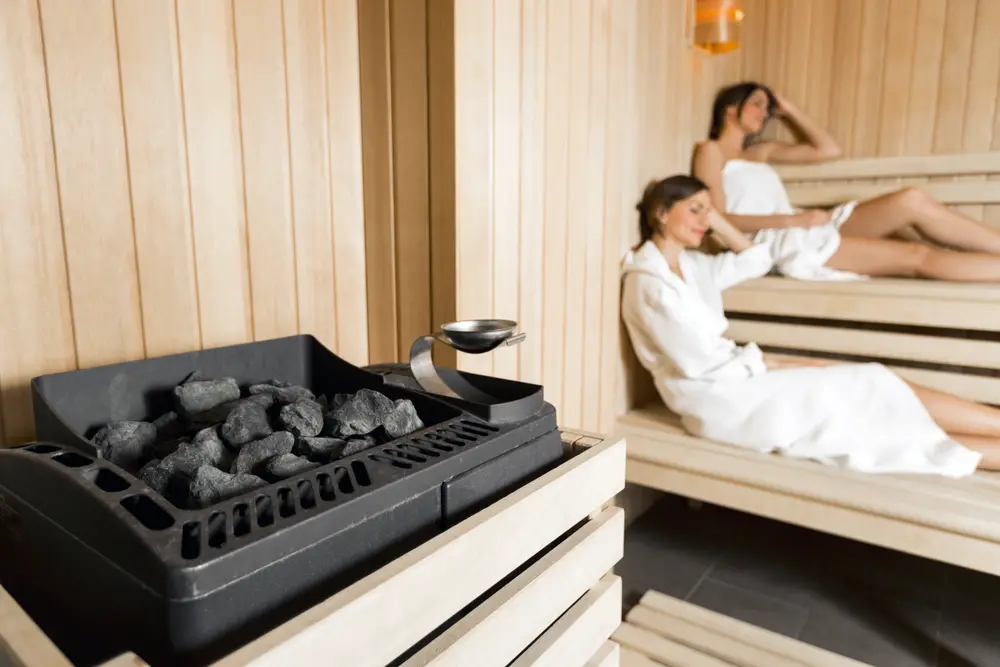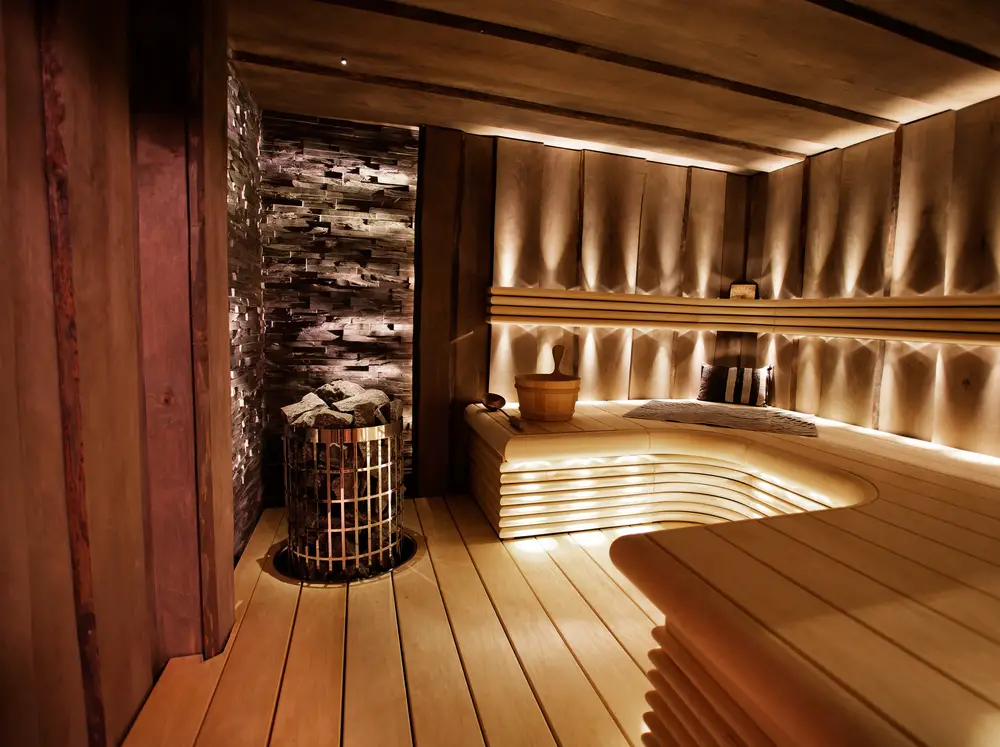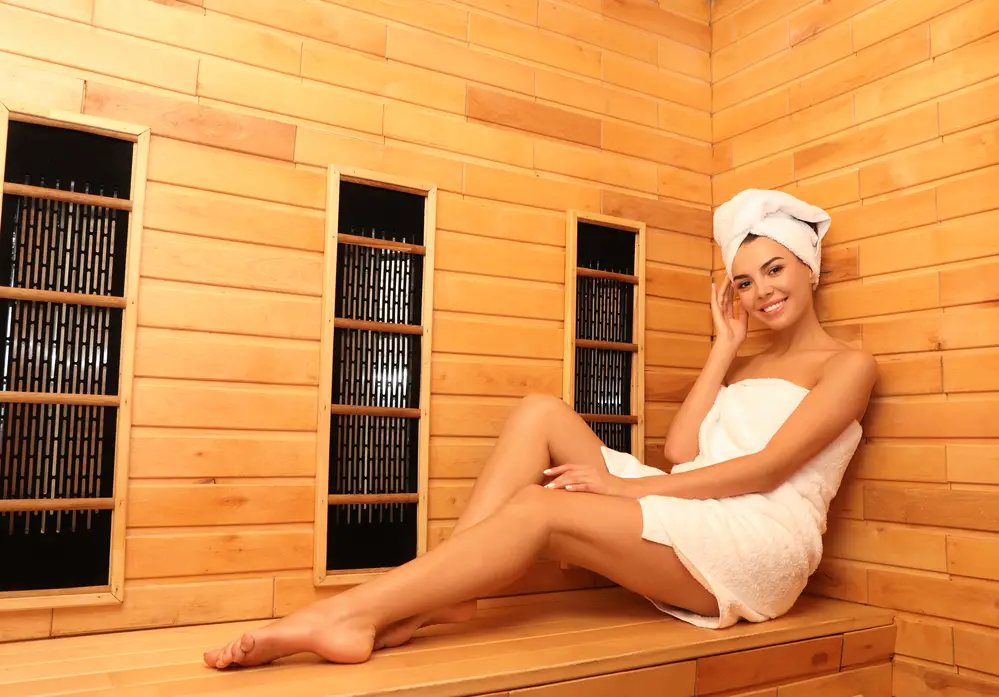Saunas provide numerous health benefits, but it’s important to also consider their energy efficiency and electricity consumption to minimize their impact on the environment and your budget.
While saunas are a popular way to unwind, their energy usage can be expensive. To enhance energy efficiency, saunas should be adequately insulated, use efficient heaters, and receive regular maintenance. By calculating electricity consumption and implementing energy-saving practices, costs can be reduced and saunas can become more sustainable.
Curious about how to make your sauna more energy-efficient and lower your electricity usage? Keep reading to learn more!
Why is energy efficiency important in saunas?

Saunas consume a lot of electricity to maintain high temperatures, so ensuring they are energy-efficient is important for several reasons. Firstly, inefficient saunas can significantly increase energy bills. According to the U.S. Department of Energy, saunas typically consume between 6-12 kilowatts of electricity per hour, which is equivalent to running a clothes dryer or central air conditioning. Improving energy efficiency can help reduce these high electricity bills, saving money in the long run.
Energy-efficient saunas are also better for the environment, as they help reduce carbon emissions and minimize overall impact. Reducing energy usage can also decrease the demand on power plants, leading to reduced air pollution and greenhouse gas emissions.
Energy-efficient saunas improve comfort and experience. Proper insulation, efficient heaters, and maintenance make them more efficient. A well-insulated sauna retains heat better and requires less energy to maintain a comfortable temperature, while efficient heaters heat up quickly and distribute heat evenly. Regular maintenance ensures the sauna is running efficiently and not wasting energy.
In addition to reducing energy usage and costs, energy-efficient saunas can also have health benefits. They can prevent dry air and high temperatures from being too taxing on the respiratory system, making it more comfortable for individuals with respiratory issues.
Also Read: Sauna Heating Options 101 – Complete Guide (Electric, Wood Fire, Gas, Infrared)
What are the basics of sauna energy efficiency?
Sauna energy efficiency requires proper insulation, efficient heating, and control over the sauna environment. To prevent heat loss and maintain warmth, it’s important to use good insulation materials such as fiberglass, mineral wool, and foam board.
Electric heaters are the most commonly used type of sauna heater. Choosing an energy-efficient model with an appropriate power level for the sauna size is important for efficient heating.
Controlling the sauna environment is also essential for energy efficiency. Using a timer to turn on the sauna before use and turn it off when finished can prevent energy waste.
Regular maintenance, including cleaning and inspections, can also help ensure the sauna runs efficiently.
Individuals can enjoy the numerous benefits of a sauna while also saving energy and decreasing their carbon footprint by adhering to these basic principles of sauna energy efficiency. Being energy-efficient is beneficial for the environment and can ultimately result in cost savings on energy bills for individuals.
How can you reduce energy consumption when using a sauna?

There are several ways to reduce energy consumption when using a sauna. Here are some tips to help you save energy and lower your electricity bills:
- Shorten your sauna sessions: Spending less time in the sauna can still provide benefits. Limit your sessions to 20-30 minutes to save energy.
- Preheat the sauna: Plan ahead and preheat the sauna to save energy by reducing the amount of time the heater needs to run to reach the desired temperature. Turn on the sauna 30-60 minutes before use.
- Insulate the sauna: Proper insulation can prevent heat loss, reducing the energy needed to maintain a comfortable temperature. Ensure your sauna is properly insulated and consider adding more insulation if necessary.
- Use a timer: Control the amount of time your sauna heater runs by setting a timer to turn off the heater a few minutes before you plan to leave the sauna.
- Keep the sauna door closed: It may seem obvious, but keeping the sauna door closed can help prevent heat loss and save energy.
- Use an energy-efficient sauna heater: If you’re considering a new sauna heater, look for an energy-efficient model with a high energy efficiency rating. Choose the appropriate size for your sauna to avoid wasting energy.
By following these tips, you can still enjoy your sauna while also reducing your energy consumption and saving money on your electricity bills.
What are some sauna energy efficiency tips?

Improving the energy efficiency of your sauna can be done through some simple tips. Properly insulating your sauna is one of the most effective methods to reduce heat loss and maintain a consistent temperature.
Another way to improve efficiency is by using an energy-efficient sauna heater. Look for a heater with a high-energy-efficiency rating and consider using a timer to control the heating schedule.
Limiting the size of your sauna is also an energy-saving tip. Larger saunas require more energy to heat and maintain, so consider choosing a smaller size that is suitable for your needs.
Reducing the sauna’s temperature can also help reduce energy consumption. A temperature of 150°F to 160°F is typically sufficient for a sauna session and lowering the temperature can significantly reduce energy use.
When using the sauna, be mindful of energy use. Avoid leaving the sauna heater on for extended periods and turn it off when finished. Additionally, avoid propping open the door while the sauna is heating up or in use, as this can lead to heat loss and increased energy consumption.
Key Takeaway
The article discusses the health benefits of saunas while acknowledging their negative impacts on the environment and budget due to their energy consumption. To address this issue, it is important to focus on improving energy efficiency through proper insulation, efficient heating, and control over the sauna environment.
Simple tips for improving sauna energy efficiency include selecting an energy-efficient sauna heater, choosing an appropriate sauna size, reducing the temperature, and avoiding leaving the sauna heater on for extended periods. Regular maintenance, such as cleaning and inspections, can also help ensure that the sauna operates efficiently.
By adopting energy-saving practices, individuals can enjoy the benefits of a sauna while saving money on their energy bills over time. Ultimately, improving energy efficiency not only benefits the environment but also enhances the comfort and overall experience of using the sauna.
Conclusion
In summary, while saunas have numerous health benefits, it’s important to take into account their energy efficiency and electricity consumption to reduce their impact on the environment and your budget. Although running a sauna can be costly, implementing energy-saving practices such as adequate insulation, efficient heaters, and regular maintenance can lower costs and make them more sustainable.
Improving energy efficiency not only benefits the environment but also enhances the comfort and overall experience of using the sauna. By following these simple tips for improving sauna energy efficiency, individuals can enjoy the benefits of a sauna while saving money on their energy bills in the long run.
Frequently Asked Questions
What are some energy-efficient sauna heaters on the market?
There are several available models that can meet your needs. Brands such as Harvia, Finnleo, and Amerec offer high energy-efficiency ratings and suitable power levels for efficient heating.
How can I reduce energy consumption when using a sauna?
To reduce energy consumption when using a sauna, consider following these tips:
- Limit the sauna size
- Reduce the temperature
- Use a timer to control heating
- Avoid leaving the sauna heater on for extended periods
How can I control the sauna environment to improve energy efficiency?
To improve energy efficiency in a sauna, you can control the environment by using a timer to turn on the sauna before use and turn it off when finished. Avoid propping open the door while the sauna is heating up or in use to prevent heat loss.
How often should I maintain my sauna to ensure it runs efficiently?
To ensure your sauna runs efficiently, it’s recommended to perform regular maintenance including cleaning and inspections at least once a year.
How much electricity does a sauna typically use?
Saunas usually consume between 6-12 kilowatts of electricity per hour, which is equivalent to running a clothes dryer or central air conditioning.
What kind of heater is best for an energy-efficient sauna?
Electric heaters are the most commonly used type of sauna heater. Choosing an energy-efficient model with an appropriate power level for the sauna size is important for efficient heating.
Also Read: Home Sauna Types – Traditional vs Infrared
